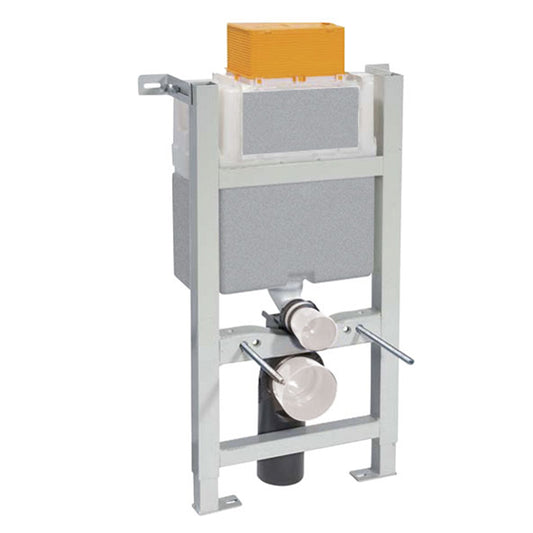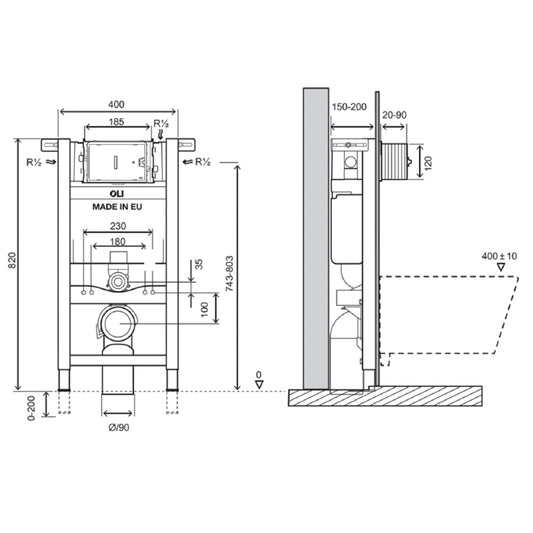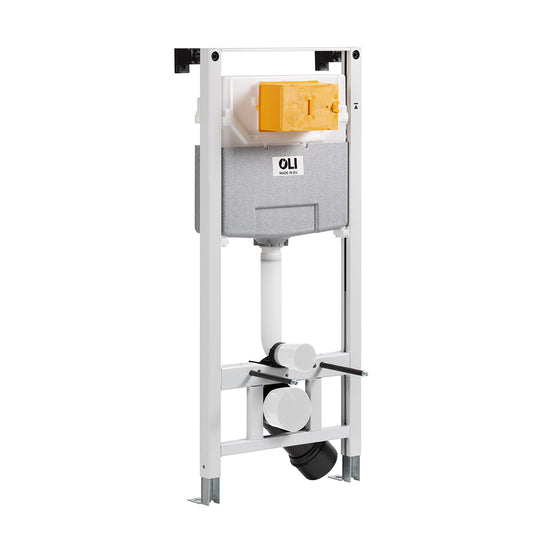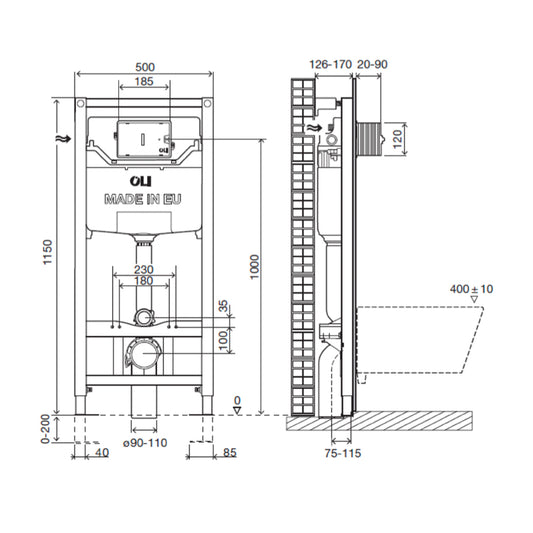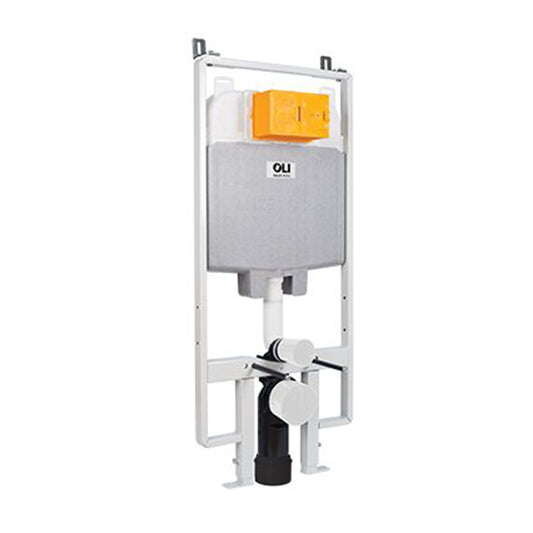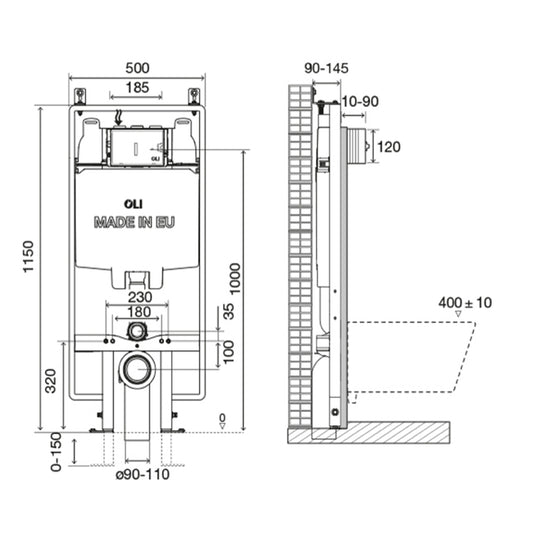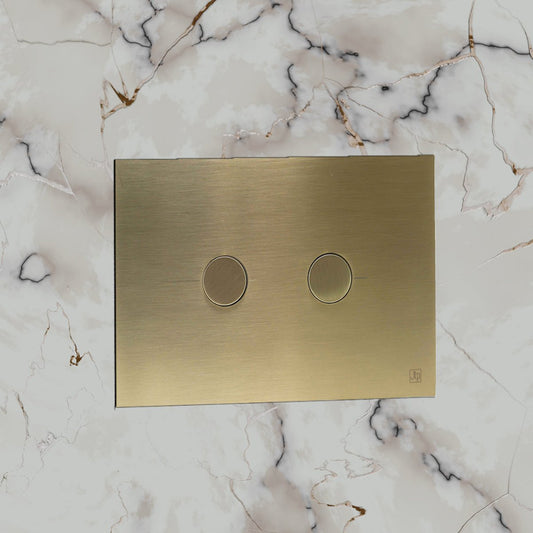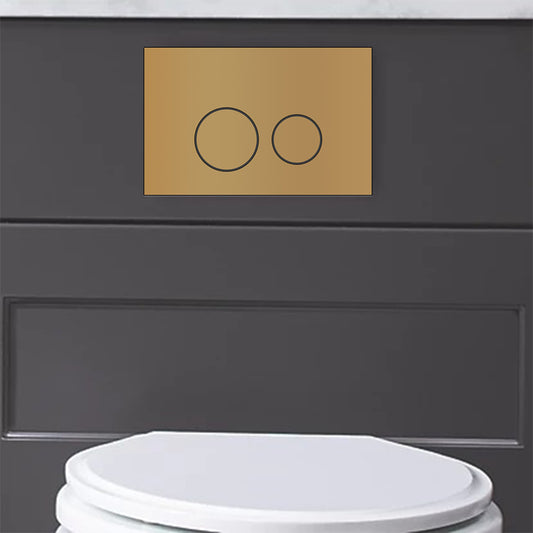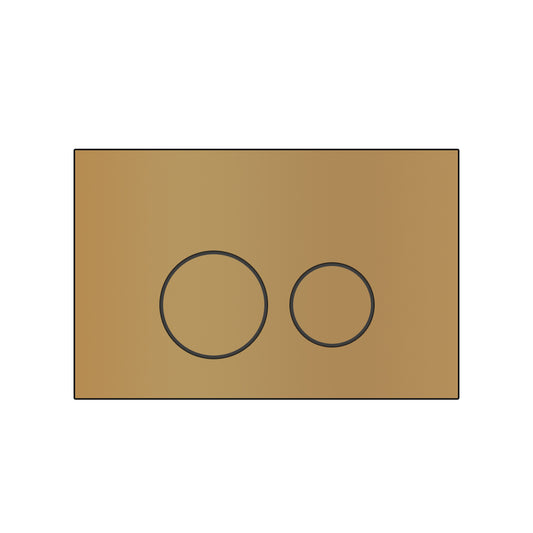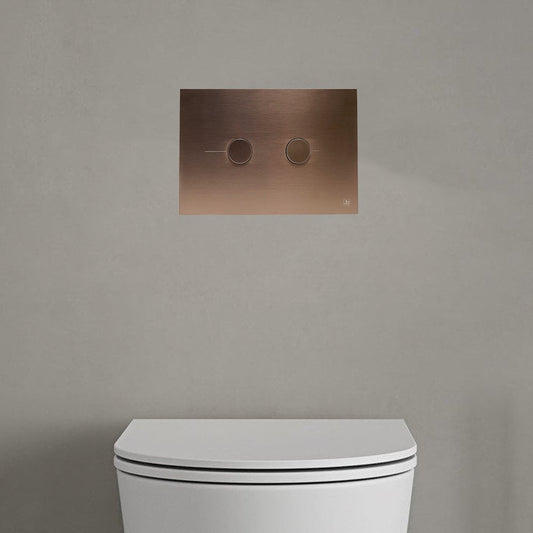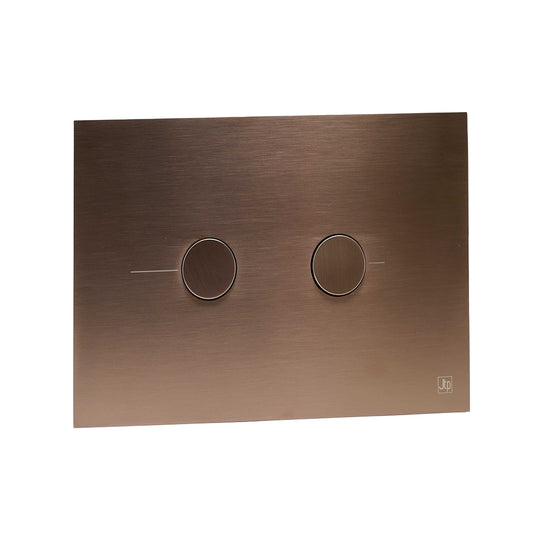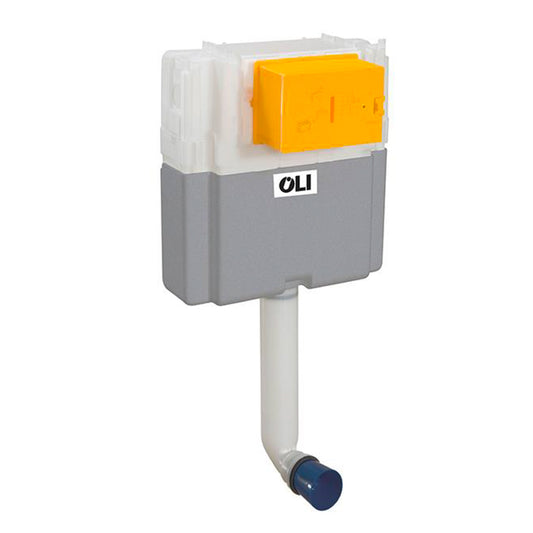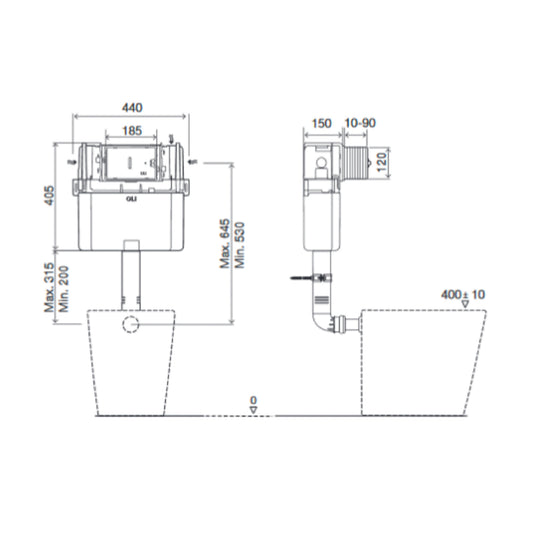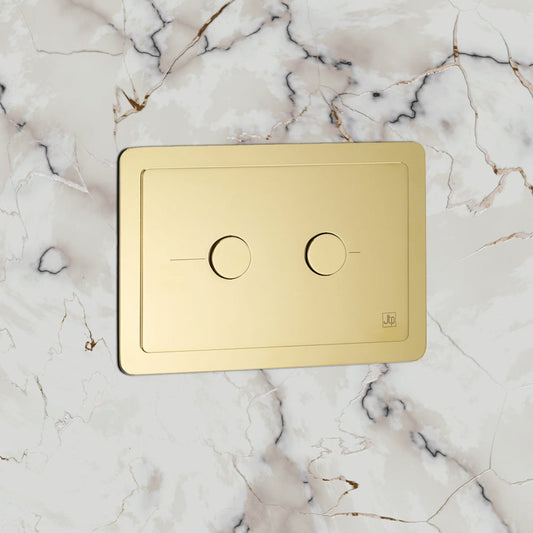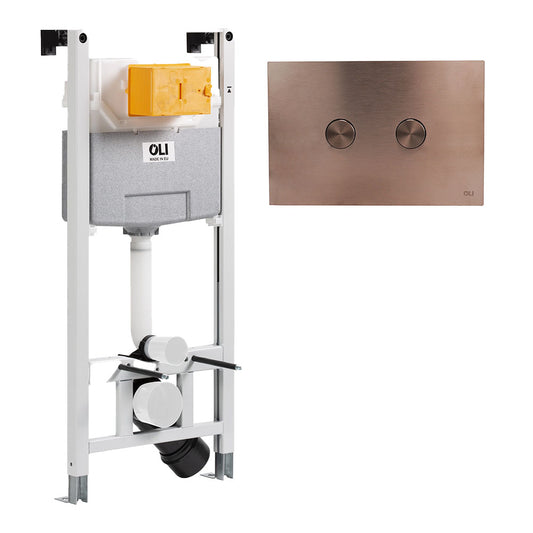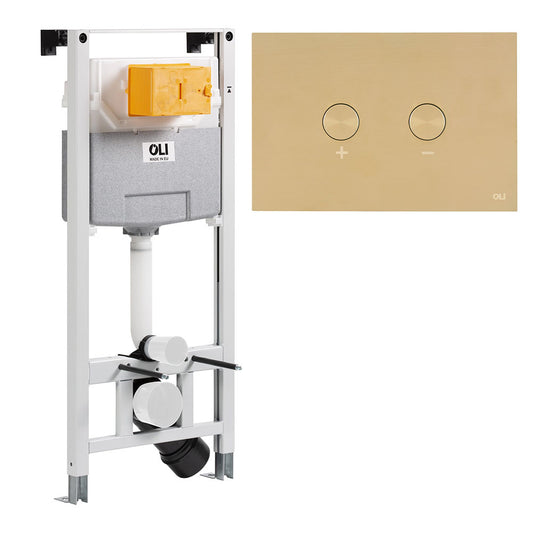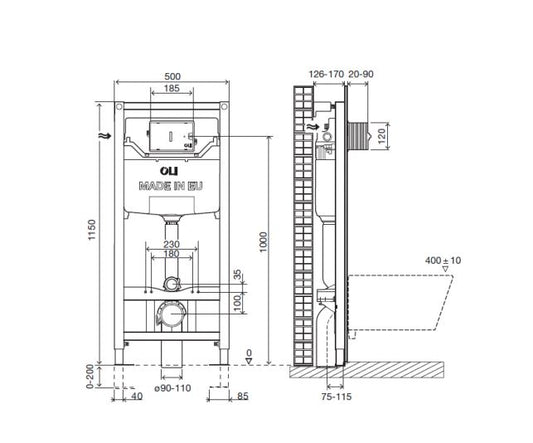Understanding Concealed Cisterns: A Comprehensive Guide
Table Of Contents:
-
Introduction
→ -
Cisterns, Wall Hung Fixing Frames and Flush Plates Collection
→ -
What is the definition of toilet cistern?
→ -
What to look for in a concealed cistern?
→ -
What is the working principle of toilet cistern?
→ -
Installation Process
→ -
Maintenance and Accessibility
→ -
What is the advantage of a concealed cistern?
→ -
Styles and Finishes
→ -
Choosing the Right Concealed Cistern
→ -
Maintenance Tips
→ -
Conclusion
→
In the world of modern bathroom design, concealed cisterns have become increasingly popular for their sleek appearance and space-saving benefits. If you're planning a bathroom renovation or just curious about these innovative fixtures, you're in the right place.
In this comprehensive guide, we'll delve into all the aspects you need to know about concealed cisterns, from how they work to their installation, maintenance, and advantages.
Introduction
Concealed cisterns, often referred to as hidden or in-wall cisterns, are an integral part of contemporary bathroom design. Unlike traditional exposed cisterns, concealed cisterns are installed within the wall, hidden from view behind the toilet bowl and tiles.
This not only creates a minimalist and streamlined look but also maximizes the use of space in your bathroom. But there's more to concealed cisterns than just aesthetics. Let's explore the various aspects of these concealed marvels.
What is the definition of toilet cistern?

A toilet cistern is a container in a toilet that stores and provides water for flushing. It releases water into the toilet bowl when the flush is activated and refills for subsequent flushes. It plays a vital role in maintaining proper sanitation in a bathroom.
What to look for in a concealed cistern?
-
Firstly, it's crucial to consider the compatibility of the concealed cistern with your toilet type. Different toilets may require specific cistern models, so make sure the cistern you choose is suitable for your toilet bowl.
-
Secondly, pay attention to the flush mechanism. Many concealed cisterns come equipped with dual flush options, offering both a full flush and a half flush for different waste types. This feature not only contributes to water efficiency but also allows you to tailor your flush to the specific needs of each use, ultimately saving water and lowering utility bills.
-
Additionally, consider the accessibility features of the cistern, such as easy-to-remove access panels or serviceable parts, as they can simplify maintenance and potential repairs in the future. Finally, think about the aesthetics of the concealed cistern, including the finish of the flush plate and the overall design, to ensure it complements your bathroom's style and decor.
1. What is the working principle of toilet cistern?
 |
At its core, a concealed cistern functions similarly to a traditional exposed cistern. It stores and delivers water for flushing the toilet. However, the key difference lies in its placement. Concealed cisterns are hidden within the wall cavity, which means the flush mechanism and water storage are out of sight. When you press the flush button on the toilet, it triggers the concealed cistern to release a specific amount of water into the toilet bowl, facilitating the flush. |
2. Installation Process
Installing a concealed cistern requires a bit more effort and planning compared to traditional cisterns. It typically involves:
 |
1. Wall preparation:Creating a cavity within the bathroom wall to house the cistern and the flush plate. |
 |
2. Mounting the cistern:Fixing the concealed cistern securely within the wall cavity. |
 |
3. Connecting the plumbing:Attaching the necessary pipes and fittings to ensure water supply and proper flushing. |
 |
4. Installing the flush plate:Mounting the flush plate onto the wall, which serves as the interface for flushing. |
While the installation process may seem complex, it's often handled by professional plumbers or experienced DIY enthusiasts.
3. Maintenance and Accessibility
 |
One concern with concealed cisterns is maintenance and accessibility. Since they are concealed behind the wall, accessing them for repairs or maintenance can be challenging. However, many concealed cisterns are designed with accessibility in mind. They often feature removable access panels or flush plates that can be easily detached, allowing plumbers to access the cistern if needed. |
4. What is the advantage of a concealed cistern?
Why are concealed cisterns so popular in modern bathrooms? Here are some of their key advantages:
 |
1. Space-saving:Concealed cisterns free up valuable floor space, making your bathroom look more spacious and uncluttered. |
 |
2. Aesthetic appeal:The minimalist design of concealed cisterns adds a touch of elegance to any bathroom decor. |
 |
3. Easy cleaning:With no exposed cistern to clean around, maintenance becomes a breeze. |
 |
4. Customization:Many concealed cisterns offer dual flush options, allowing you to save water and lower your utility bills. |
 |
5. Noise reduction:The hidden placement of the cistern often results in quieter flushing compared to traditional cisterns. |
5. Styles and Finishes
Concealed cisterns come in a variety of styles and finishes, allowing you to choose one that complements your bathroom's aesthetic. Some common options include:
 |
Chrome Finish:Chrome is a popular choice for concealed cistern flush plates due to its modern and sleek appearance. It pairs well with contemporary bathroom decor. |
Brushed or Matte Finishes:For a more subdued and subtle look, consider concealed cisterns with brushed or matte finishes. These finishes are less prone to showing fingerprints and watermarks. |
 |
 |
Customizable Panels:Some manufacturers offer customizable flush panels, allowing you to select the finish and design that best suits your bathroom theme. |
Flush Plate Shapes:Flush plates come in various shapes, from classic rectangles to minimalist squares. The shape you choose can impact the overall look of your toilet area. |
 |
6. Choosing the Right Concealed Cistern
Selecting the right concealed cistern involves considering several factors:
 |
1. Toilet Type:Ensure that the concealed cistern you choose is compatible with your toilet bowl. Different toilets may require specific cistern models. |
 |
2. Flush Mechanism:Concealed cisterns often feature dual flush mechanisms, providing both a full flush and a half flush option. This can help you conserve water, so choose a cistern with the flush capacity that suits your needs. |
 |
3. Wall Thickness:The thickness of your bathroom wall can affect the type of concealed cistern you can install. Some models are designed for thinner walls, while others are suitable for thicker wall cavities. |
 |
4. Accessibility:Consider the accessibility features of the cistern. Some models come with easy-to-remove access panels or serviceable parts, making maintenance and repairs simpler. |
7. Maintenance Tips
To keep your concealed cistern functioning optimally, here are some maintenance tips:
 |
|
Conclusion
Concealed cisterns are a stylish and practical addition to modern bathrooms, offering space-saving benefits, aesthetic appeal, and water-saving options. When choosing a concealed cistern, consider your bathroom's design, compatibility with your toilet, and accessibility features. Regular maintenance will ensure its longevity and trouble-free operation.
With this comprehensive guide, you're now well-equipped to make an informed decision about incorporating concealed cisterns into your bathroom renovation or design project. Enjoy the benefits of a sleek, minimalist bathroom space that maximizes both style and functionality.










